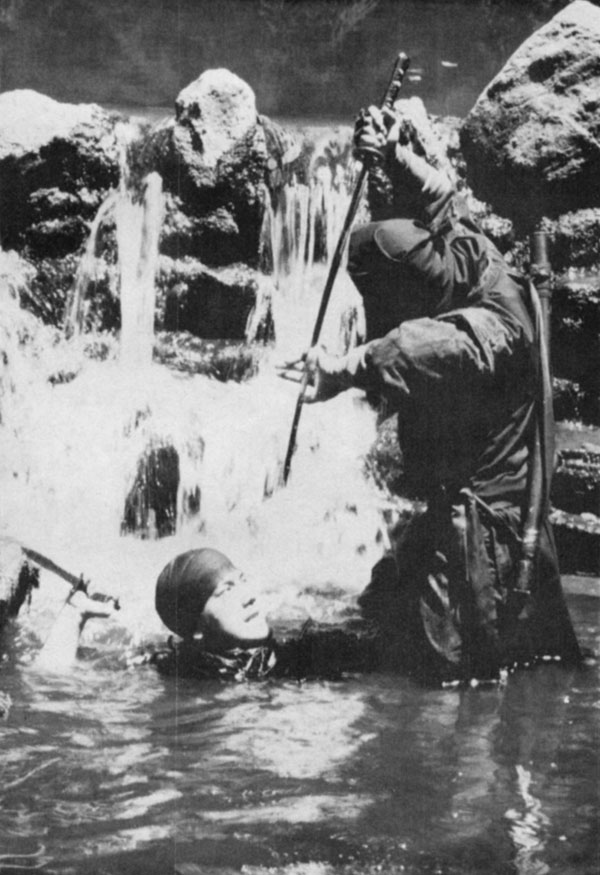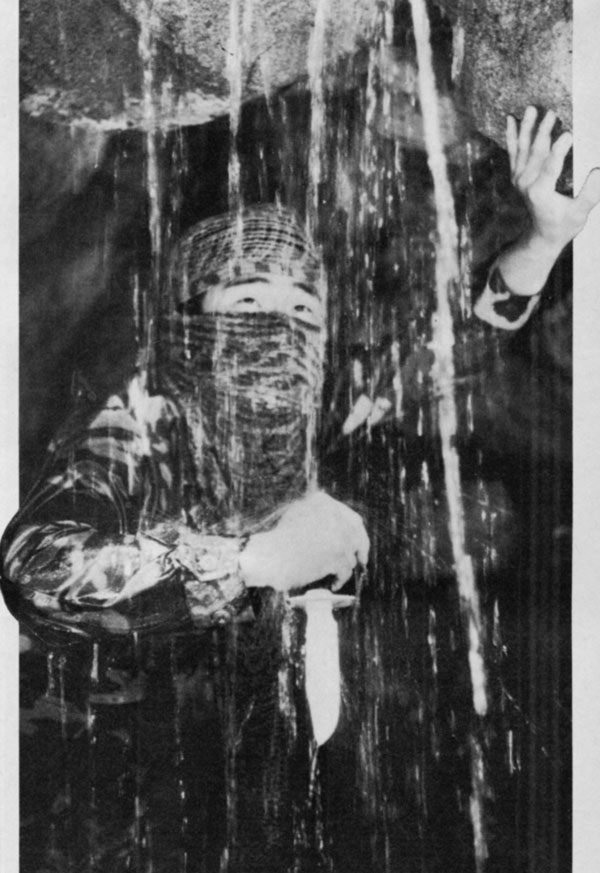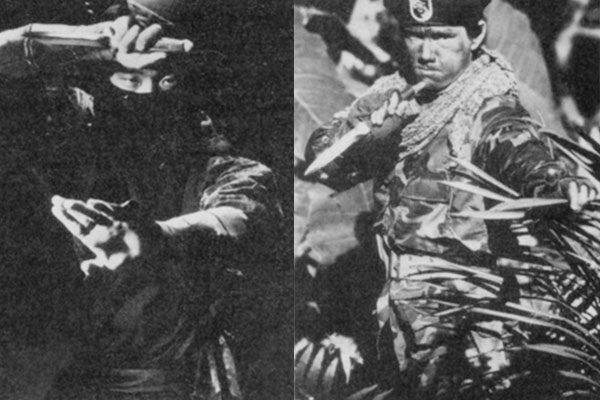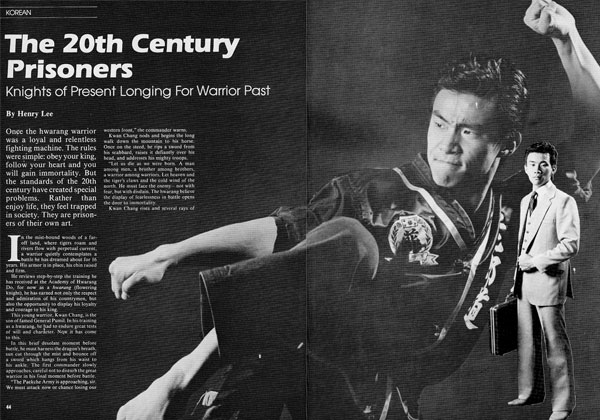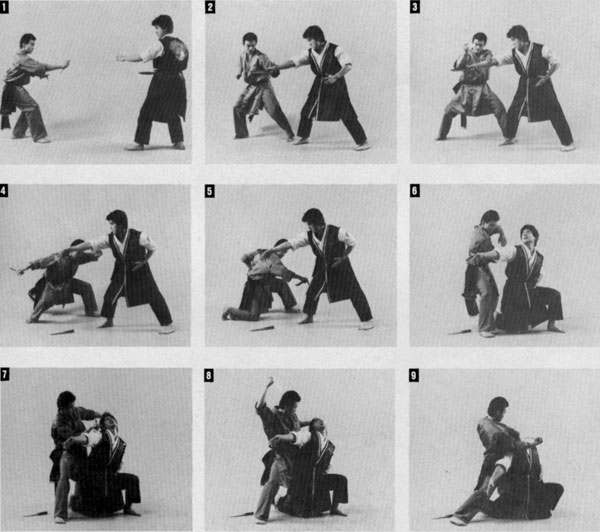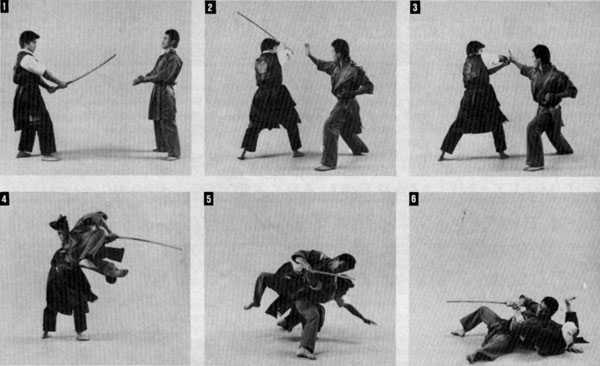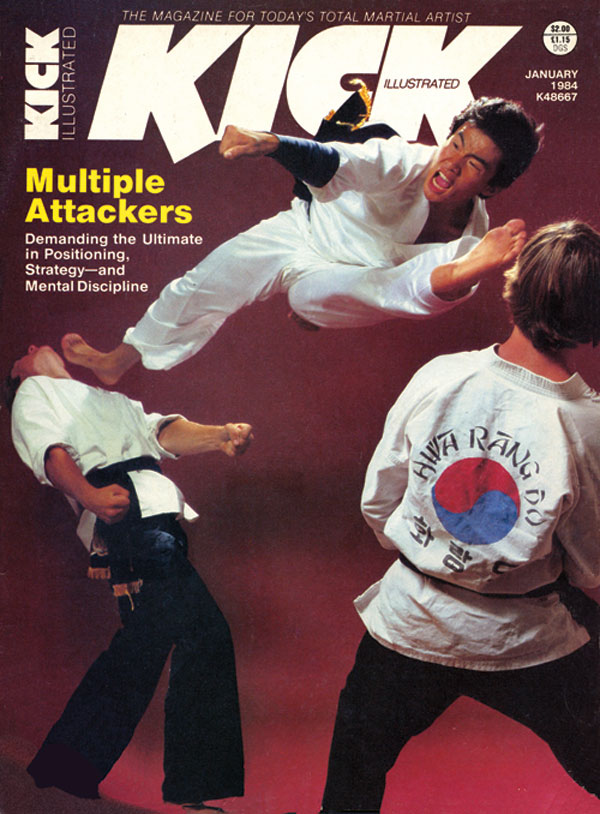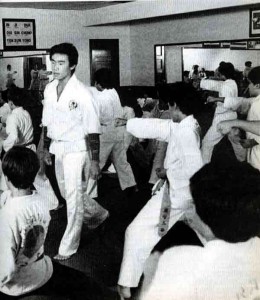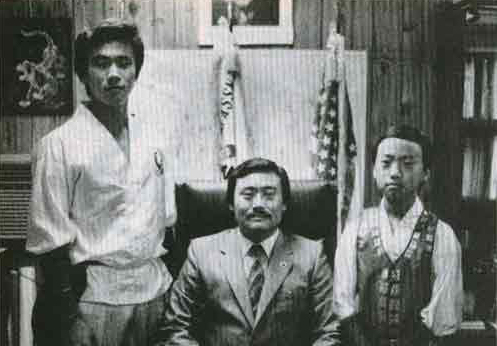Taejoon Lee
Hwa Rang Do®’s Golden Child
Prepares to Lead the Korean Art into the New Millennium
(Black Belt Magazine – July 2001)
By Hyung-Min Jung
The conflict between traditional values and modern living is an issue in many cultures these days. The martial arts have also become a battlefield for this conflict, with many practitioners wondering whether to follow in the footsteps of their ancestors or tread a new path. In an era when old-fashioned values are increasingly falling by the wayside, there are exceptional few who manage to retain the strength of the old ways while improving, growing and adapting with modern society. Taejoon Lee, chief master of the World Hwa Rang Do® Association, is one of them.
Personal History
The eldest son of Lee Joo-bang, the supreme grandmaster of the World Hwa Rang Do Association, Taejoon Lee has seen both sides of the tradition-vs.-modernization and has constructed a path for his students to follow. Born in Seoul, South Korea, and raised under the strict eye of his father, Lee under went an often painful forging process in his early years. “Children have life a little too easy these days,” says the seventh-degree, “Go talk to older people. Most of them went through things that would be considered child abuse by modern standards, yet the vast majority of them didn’t exhibit the kind of disturbing behavior we see so commonly in today’s youth, like breaking into their father’s gun cabinet shooting their schoolmates.”
Once when Lee was 4, he threw a temper tantrum in front of his parents. His father left him on the rooftop of their building in the freezing snow barefoot and in his underwear in the middle of the Korean winter until he realized the impropriety of his manner. “Doing that is illegal these days,” he says. “You’d be thrown in jail in a heartbeat, and your kids would be put in protective custody. In Korea, we called that discipline.” For most the story would end there, but that’s not all. The real clincher is: After sometime has passed, Lee’s father tells the mother to go let him in. When his mother approaches and tells Lee his father has given him permission to come in, Lee refuses and defiantly remains in the snow.
The opponent (left) controls Taejoon Lee with a head lock (1). Lee activates a pressure point behind theopponent’s right knee to prevent him from stepping backward, then slides to his left so he can position his right arm for the escape (2). Lee scrapes his ridge hand and forearm across the opponent’s face as he arches his back and neck, thus loosening the head lock (3). The hwa rang do expert continues to bridge backward as he wraps his right arm around the other man’s neck and cranks it (4). Lee continues to roll the opponent and pull him off-balance as he steps forward with his right leg (5). To finish, Lee drops to one knee and tightens his hold on the opponent’s neck and hair (6).
Through daily men tal training like the aforementioned experience, Lee grew and learned within the Hwarang warrior tradition. “People, especially in the United States, think of discipline as a form of punishment,” he says. “It’s seen as an impairment of freedom, limiting the free expression of another human being. To the followers of the Hwarang tradition, we understand that without strong discipline accompanied by effective consequences, a human being cannot grow to full potential. The discipline and forging we undergo in our youth gives foundation on which to really grow mentally, physically and spiritually.
tal training like the aforementioned experience, Lee grew and learned within the Hwarang warrior tradition. “People, especially in the United States, think of discipline as a form of punishment,” he says. “It’s seen as an impairment of freedom, limiting the free expression of another human being. To the followers of the Hwarang tradition, we understand that without strong discipline accompanied by effective consequences, a human being cannot grow to full potential. The discipline and forging we undergo in our youth gives foundation on which to really grow mentally, physically and spiritually.
Yet there’s a caveat to those would misinterpret what Lee is saying. “Discipline isn’t punishment,” he cautions. “Discipline should come from love. Punishment comes from hatred. Children have to be guided with care and love, not with an abusive heart.”
The freedom Lee speaks of can be seen in everything from his beautiful West Los Angeles dojang (training hall) to the effortlessness with which he takes flight to kick. The spacious hall that houses Lee and his students offers the best in modern training equipment, complete with polished equipment, hardwood floors, comfortable mats, stereo sound and computerized attendance and bookkeeping systems. Yet there are reminders of traditional virtue all around in the shape of beautifully carved, wooden Chinese characters representing the qualities of perfect conduct as written by his father: humanity, justice, courtesy, wisdom, trust, goodness, virtue, loyalty and courage. Under the junior Lee’s strict guidance, such a training environment gives students the foundation on which to build their mind and body.
The physical discipline of Hwa Rang Do is another aspect of Taejoon Lee’s expertise. Speaking of the spectacular kicks for which his art is renowned, he says “A lot of people look at a kicking demonstration and talk about how much they want to learn that. But when it comes time to really practice, really train, really sweat push hard, their hearts might not be into it. Physical excellence isn’t something a credit card can buy. It’s one of the best B.S. detectors you can find. Someone who really works hard, really puts in the effort will be superior.”
In Hwa Rang Do, kicks abound, and the degree of difficulty is often underestimated by novices. “New students love to see advanced students practicing the aerial and spinning kicks, often trying to imitate them,” Lee says. “But the discipline it takes to stay focused on really perfecting the basic kicks and develop the leg power from stance work can seem boring to novices. That’s when I have to explain to them that every hour they put their whole effort into perfecting the kicks and stances will make it easier to learn the more difficult techniques later on.”
“When students can postpone that urge for immediate gratification and focus on the task at hand, they’ll be successful in anything they do because they’ve learned what real persistence and diligence are about,” Lee continues. “These are people who push themselves to greatness—the self-starters that every company wants to hire.”
Taejoon Lee (left) readies himself for the opponent’s attack (1). The opponent charges and attempts to tackle the hwarang do stylist (2), but he intercepts the motion by wrapping his left arm around the opponent’s right arm and pushing his own right arm down as if to effect a guillotine choke (3). Lee then switches course and locks a figure-4 hold on the other man’s right arm (4). By placing pressure on the opponent’s triceps, Lee forces him down as he tightens the shoulder lock (5). Next, Lee drops to his right knee while maintaining pressure on the shoulder (6). He completes the defense by moving to the opponent’s back and immobilizing him (7).
Evolution
Hwa Rang Do’s techniques are not limited to just kicks, however. The system to which Lee’s family is heir is perhaps Korea’s most comprehensive martial art. Throws, locks, strikes and more than 108 weapons comprise the arsenal of modern hwa rang do warriors. Ancient techniques that have been handed down for thousands of years give students a distinct advantage on the street, but don’t think for a moment that the art hasn’t evolved over time.
“When the kingdoms of Baekche (18 B.C.-A.D. 668) and Silla (57 B.C.-A.D. B.C.-A.D. 668) were at war, firearms weren’t a major part of the equation like they are now,” Lee says. “But Hwa Rang Do has grown to meet the needs of every era. We now have gun disarms, weapon retention techniques and strategic shooting principles for the military and police courses we teach. “The base concepts on which the system was founded allow you to interpolate the proper attack or defense in any situation, regardless of which era you’re in,” he continues. “Koreans have been invaded more than any other country in Asia, but our culture and our ways have survived. We didn’t get that way by not being able to adapt.”
In the same way his art has evolved, so has Lee. When he arrived in America at age 9, he took the English name of Henry. While still young Henry Lee was known in martial arts circles as a child prodigy. He attended the University of Southern California and pioneered the Intercollegiate Hwa Rang Do Society (ICHRDS) during his undergraduate career. During those years, he ran as President of ICHRDS (which governed seven HRD university clubs: USC, UCLA, UCI, UCR, UCSD, CSLB, ASU) for over ten years, he managed to divide time between teaching at several campuses, running his own school, managing the international headquarters dojang and full-time academics—thus maintaining a delicate balance between the demands of Korean tradition and American college life. After he graduated, he made the difficult decision to abandon his pursuit of law and follow in the footsteps of his father, inheriting the family business with all the trials and tribulations inherent in a martial arts dynasty.
“Because he’s so completely focused on the development and maintenance of his art, my father let a lot of things go in his early years here in the United States,” Lee says. “His students would ask him questions about the history or lineage of Hwa Rang Do, and then they’d write articles on what they heard from him. Unfortunately, there were some inaccuracies that piled over time due to the language barrier, and my father didn’t really make an effort to put the situation in check.”
“When I made the decision to devote my life to Hwa Rang Do full-time, I questioned him about everything I wasn’t 100-percent sure about. But my father’s answers as well as through my personal research made complete sense to me, and now with the help of a bilingual individuals such as myself, we’re setting the historical straight for the public, and we’ll let the scholars verify it all.”
Future
Now Lee’s life is geared toward propagating his father’s art and continually bettering himself in preparation for the mantle he will wear one day as the Supreme Grandmaster of Hwa Rang Do. “All the happenings of the past few years have given me time to really digest what my place in this world is,” he says. “I am my father’s eldest child, the one who will support him and his art to my last breath because I see the greatness that he is and because I understand the truth that he speaks.”
“I made a conscious choice to accept the responsibility that comes with being my father’s successor in Hwa Rang Do,” he continues. “As warriors our strength is measured by the responsibilities we carry and our accountability to a higher cause. That signifies our worth to this world. My responsibility is to my father’s art and in setting an example for later generations of practitioners to follow.”
Part of that responsibility involves understanding Hwa Rang Do’s origins. Lee is publicly clarifying his father’s role in the development of the modern Korean martial arts. He has also grown comfortable with his Korean heritage, exhibiting a fierce pride in the accomplishments of his people. “Koreans have never been conquered; that’s why we’re called the indomitable people,” he says. “Our culture, our ways, our language all live on despite the horrifying cultural oppression of the the Japanese occupation from 1910 to 1945. To come from that kind of heritage is an honor. In recognition of that history, he has dropped his American name and now sticks to his Korean name: Taejoon Lee.
The junior Lee was practically raised in the dojang, he says.The chief master continues with a little-known vignette: “Years ago there was a Korean martial arts gathering in San Francisco. Hapkido masters, were there, taekwondo masters were there and kuk sool masters were there. When it came time for the masters to be seated at the head table, Ji Han jae, the man who is revered as the senior-most hapkido practitioner in world, was in the seat of honor. The older masters know their place with each other. When they get face-to-face, they know who trained with whom, what each other’s secrets are. There’s no hiding behind the media or a Web site. The man who sits first is the most-senior, most-revered person in that gathering. My father, my uncle [Lee Joo-sang] and I arrived late. When we walked in, Ji Han-jae got up, as did everyone else, and re-seated. My father sat at the seat of honor, followed by Ji Han-jae and my uncle. After them, everyone else sat. When I saw my father sit first, that told me everything I needed to know. Now it’s my turn to make sure the world understands the real deal with Hwa Rang Do and my father’s legacy.”
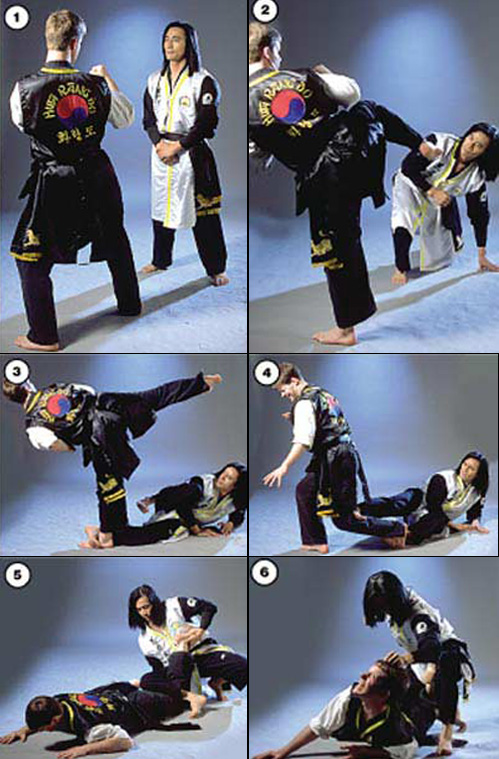
Just as the Hwarang knights of ancient Silla had models like the legendary Gen. Kim Yu-shin, the modern followers of the Hwarang tradition will have a shining knight to follow in the 21st century. Taejoon Lee is coming out, ready to fight, ready to stand behind his art, ready to show the world what the strength of tradition can accomplish and ready to make waves. His life in Hwa Rang Do has given him the means to make the perfect synthesis of East and West, the traditional and the modern—finally attaining balance within himself and living harmoniously with the universe.
Lee Joo-bang, the patriarch of Hwa Rang Do, sits with son Taejoon.

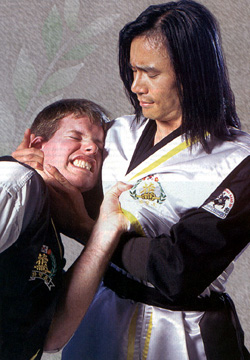

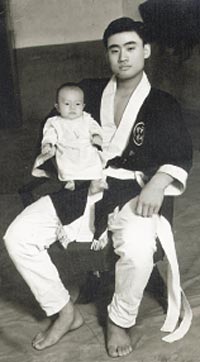
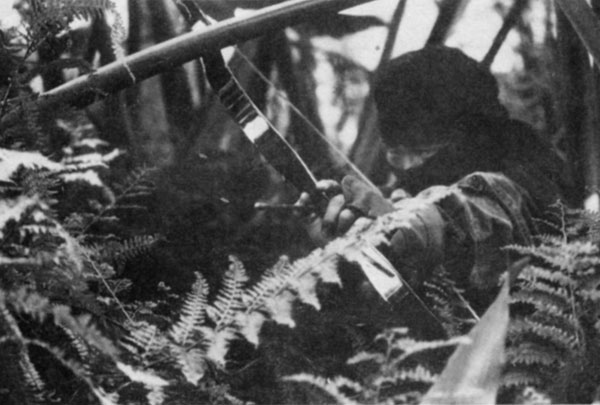
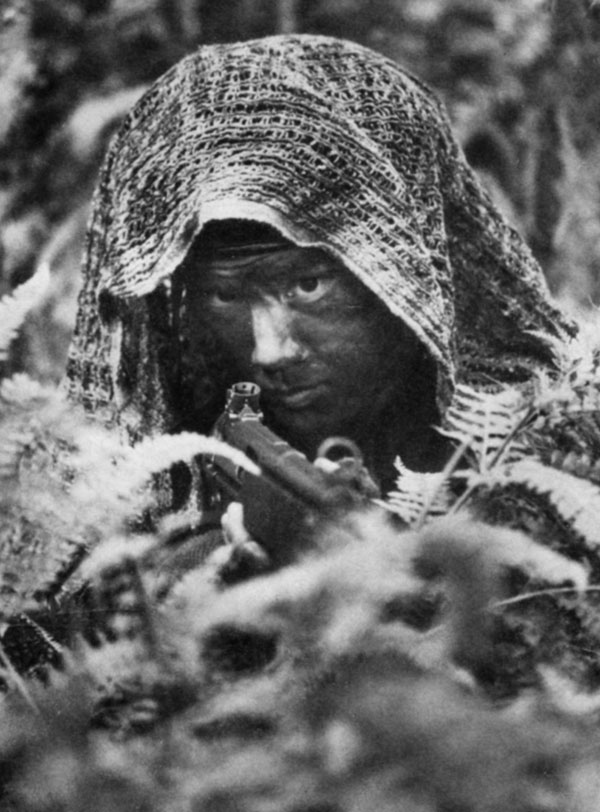
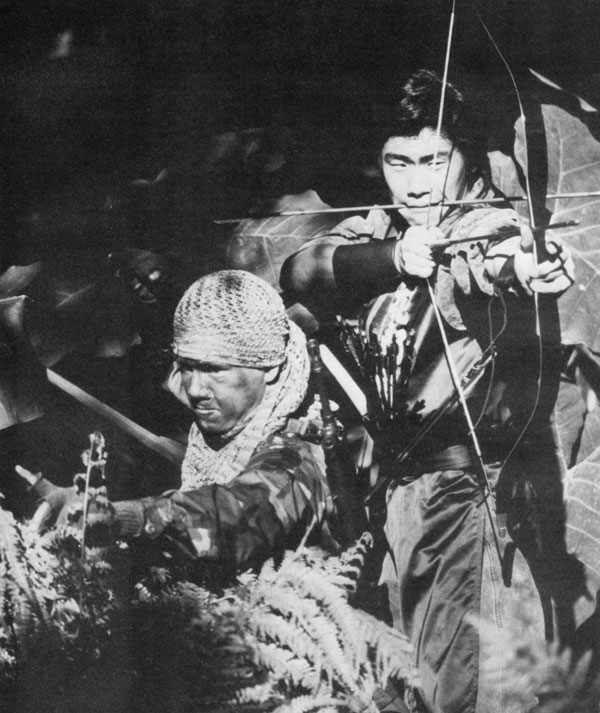
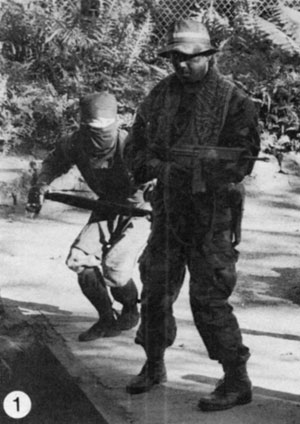
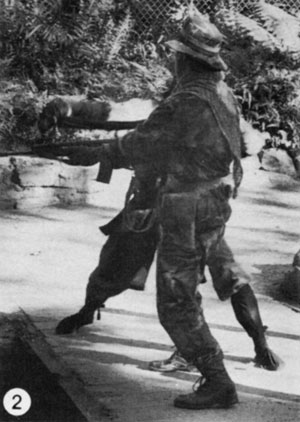
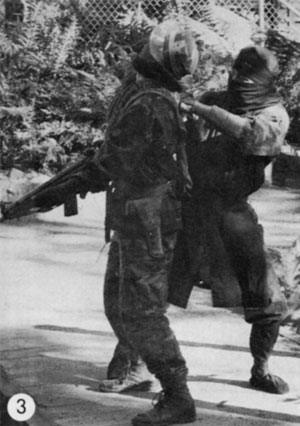
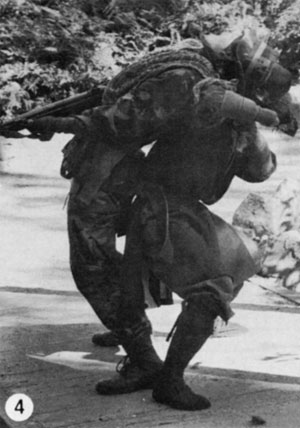
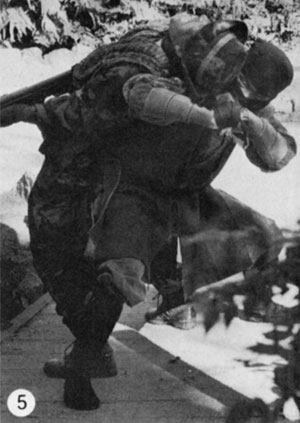 Am-ja is the “way of darkness.” In this division, trickery, deception and cunning are the key elements of success. One must use whatever method, tool, or strategy is necessary to gain an advantage and defeat the enemy. In am-ja, the only honor lies in the ultimate outcome. Like the Machiavellian principles, the end justifies the means. In this school, one learns techniques in manipulating the enemy psychologically, physically and emotionally to confuse him, then move in for the final blow. In ancient Korea, the way of darkness was necessary for maintaining national security.
Am-ja is the “way of darkness.” In this division, trickery, deception and cunning are the key elements of success. One must use whatever method, tool, or strategy is necessary to gain an advantage and defeat the enemy. In am-ja, the only honor lies in the ultimate outcome. Like the Machiavellian principles, the end justifies the means. In this school, one learns techniques in manipulating the enemy psychologically, physically and emotionally to confuse him, then move in for the final blow. In ancient Korea, the way of darkness was necessary for maintaining national security.